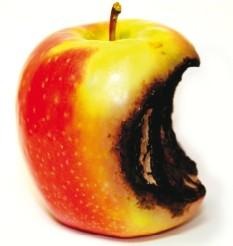Minneapolis: the DFL’s Bad Apple

Minneapolis may boast it makes the “Best of” lists, but this self-praise is not reality for most of the city’s population.
Frontpage Magazine recently published an article on how the Left destroys American cities, and unfortunately Minneapolis is one of them.
Camouflaged by the state as a whole, a synonym for plainspoken stability, it is just one of the many American cities that were once thriving centers of industry, prosperity and optimism—until Democrats took them over. Since 1978, Minneapolis has been governed exclusively by mayors from the Democratic Farmer Labor Party (DFLP)—the state affiliate of the Democratic Party. Prior to this long era of Democratic dominance, Minneapolis’ poverty rate was consistently lower than the national average.
So what caused Minneapolis’ shift away from opportunity and wealth? Even 1988 DFL Mayor Donald Fraser didn’t like what was happening to his city–economic boom in one half and welfare dependency rising in the other.
Cue entrance of “solutions” that actually make problems worse.
Taking a page out of the same playbook other big city Democrat mayors were using, Fraser believed the cure was redistribution of income.
Fraser’s successors as mayors of Minneapolis—Sharon Sayles Belton (1994-2001), R.T. Rybak (2002-2013), and Betsy Hodges (2014-present)—have shared this same core belief in the importance of massive public expenditures on social-welfare programs and wealth-redistribution initiatives.
But the cure wasn’t income redistribution or more welfare programs, and Minneapolis residents suffered.
As of 2015, the poverty rate in Minneapolis was 25.3%, nearly twice the 14% statewide rate for Minnesota and the 14.3% rate for the United States as a whole.
More recently, Minneapolis property taxes increased by 3.4% in 2016, and by a crippling 5.5% in 2017. Notwithstanding the growth in revenues generated by these taxes, the government of Minneapolis has been incapable of balancing its budget.
Economic difficulties aside, crime problems have also plagued the city.
Today, crime rates in the city remain far higher than statewide and national figures alike. In 2015 the violent crime rate in Minneapolis—encompassing homicide, rape, robbery, and assault—was about 3 times higher than the national average. All told, Minneapolis ranks among the most dangerous 5 percent of all cities in the United States.
These statistics should give us pause. The DFL states it is pushing for a better Minnesota so every Minnesotan has a right to “stable employment with fair wages” and can “live in safe communities.”
But the long reign of liberal leaders in Minneapolis hasn’t been able to make this a reality for enough residents. Unless the Mini Apple can escape from being a liberal-run city, it will remain an “urban equivalent of a captive nation.”